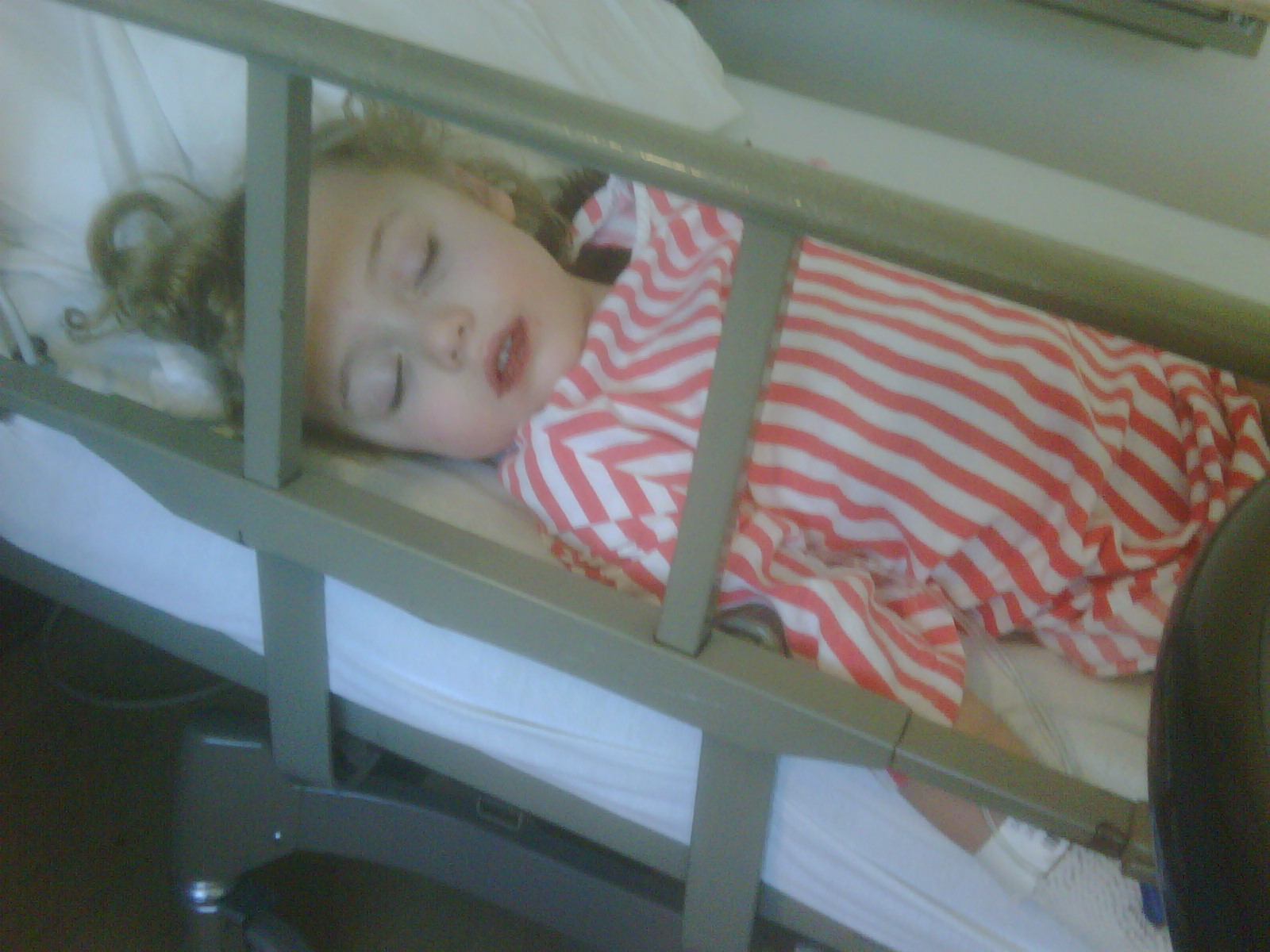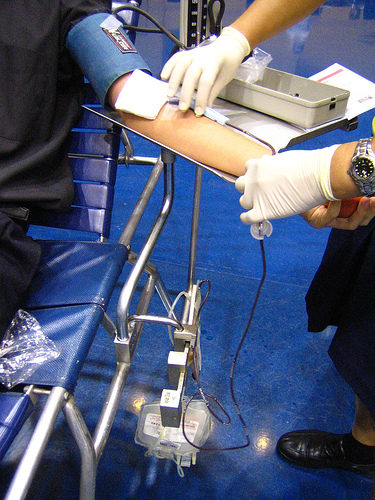 They should sell T-shirts that say, “I survived my child’s first overnight stay in a hospital.” Or they should give out badges, like they do in Girl Scouts. Because let me tell you, it is quite an accomplishment. Just one night in the hospital with my son left me feeling jagged and raw. While I was sitting there yesterday afternoon wondering when I would be able to grab a sandwich and a cup of coffee, I sent a message to my friend Amy, expressing my pure admiration for the fact that she did this in a far more serious situation, day in and day out, for five months.
They should sell T-shirts that say, “I survived my child’s first overnight stay in a hospital.” Or they should give out badges, like they do in Girl Scouts. Because let me tell you, it is quite an accomplishment. Just one night in the hospital with my son left me feeling jagged and raw. While I was sitting there yesterday afternoon wondering when I would be able to grab a sandwich and a cup of coffee, I sent a message to my friend Amy, expressing my pure admiration for the fact that she did this in a far more serious situation, day in and day out, for five months.
It all started when James started tossing his cookies at the daycare on Monday. For a full 24 hours he was throwing up and having attacks of diarrhea, and even when they kind-of-sort-of passed, he didn’t get better. By the time I got home from work on Wednesday evening, he was still not eating or drinking, and he was crying out from the pains in his tummy.
Recognizing that most kids’ tummy bugs are over and done with in a day or so, and we were now at the end of Day Three, I took James to the walk-in clinic (no family doctor – ours had the gall to retire, citing stuff like “time with family”). The doctor at the clinic examined James for five minutes and decided he wanted none of it. He told me to get James to the hospital. “Now,” he said.
The triage nurse at the hospital was cranky. She was abrupt and acted as if we were inconveniencing her. I didn’t hold it against her. She was nearing the end of what had probably been a long shift in the emergency room, but still. Being cranky with a sick five-year-old seems a bit much. She did her thing and then sent us off to see the admitting doctor – go to the room at the end of the hall and wait in partition D, she said.
The doctor was cranky. He overheard James saying that we were looking for “Number D” and grumpily said, “D is not a number.”
For God’s sake. I mean, I know E.R. doctors are taxed to the limit. These guys are on their feet for long shifts during which they no doubt have to make many life-or-death decisions, but come on. Don’t take out your stress on a five-year-old child who is visibly ill.
Anyway.
The doctor examined James and said that he was severely dehydrated. He invited me to feel James’ hands. I did, and they were ice-cold. The dehydration had made his core body temperature drop right down. We were taken to a dedicated examination room and IV fluids were started. Within 20 minutes, James’ temperature was looking better.
The on-duty pediatrician came in, examined James, and made the decision to keep him in overnight. He was transferred to the pediatric floor, and we were installed in a room. I helped the nurses get James as settled as he could be, and then I lay in the bed provided for me and failed to sleep. Every now and then I kind of sank into a trance, only to be roused by the comings and goings of the nurses who came in to fuss over James every now and then.
James was in much better spirits when he woke up in the morning. He still couldn’t eat, but he requested and received a Popsicle. In a turn of events that was very sweet, when the nurse came in with the Popsicle, he asked her if she would please get another one for his Mommy. We sat there in companionable silence, eating our Popsicles together (and it was so welcome – my throat was parched), and then another nurse came in bearing gifts. Apparently, every child admitted to the pediatric floor gets a bag of toys that they get to take home with them.
I borrowed a BlackBerry charger from the doctor, and was able to be in touch with the outside world again. I read and responded to emails, James played with his new toys plus the ones his Dad had brought him from home during the night. Apart from the occasional stomach cramps and attacks of diarrhea still plaguing James, all was well, if a little bit boring. IV fluids continued to drip into his system, and the comings and goings now involved a different group of doctors and nurses.
In the middle of the afternoon, I was finally able to get a cup of coffee and a sandwich. By this point I was beyond exhaustion and beyond hunger. With the nurse watching James, I fled to the donut shop, where I got a sandwich and a cup of coffee. Then, in a bid to extend my freedom for a little longer, I went into the gift shop and got James a new Cars toy and a book.
Back upstairs, I drank my coffee and ate half of the sandwich. I promptly threw both of them up.
Lovely. Just as my son is getting better, now I start to get sick?
Since I have not had a repeat episode since then, I am assuming that my system was just responding to exhaustion, and that the shock of actually receiving food for the first time in 24 hours was a bit too much for my body.
In the late afternoon, the pediatrician came in and declared James almost well enough to go home. He was hydrated again, he was drinking on his own, and he had even managed a bit of food. All we were waiting for, she said, was for him to pee. Once he had peed, we would know that fluids were getting both into and out of his system OK. In the I.T. world, we would refer to this as end-to-end testing.
A couple of hours later, James’ bladder obliged, and we were given the all-clear to leave. The IV was disconnected, final temperature and blood pressure checks were done, and we were out of there. James was definitely a much more healthy, brighter child than he had been before going in.
It felt almost obscenely good to be back home.
James is OK. George, who was doing a great deal of his own throwing up in our absence, seems to be on the mend. I have not tossed my cookies again (although, to be fair, I haven’t taken a chance on eating either).
Equilibrium seems to be returning…
And I am truly grateful to the doctors and nurses at Centenary Hospital for taking such good care of my baby.










